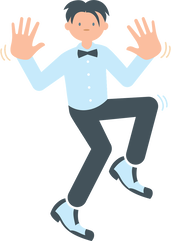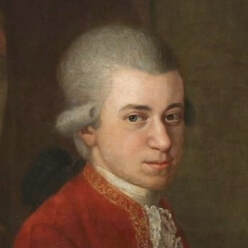|
There are sensors attached to my skull. More on my legs. Wires run to a device strapped to my chest. The bed is small and so is the room.
My brain activity is being tracked and monitored. I’m in a hospital for a sleep study. And despite all the sensors and wires, I start to drop off. And then I hear it. It sounds like something has fallen. Not a body tumbling down a flight of stairs this time. More like a shelf giving way and books hitting the floor. It lasts about a second. I know no one else can hear it. I know it isn’t real. It’s an auditory hallucination, a semi-regular event in the months after my concussion. It’s not scary or even surprising but I wonder if it might be an important clue about what’s going on inside my skull. So I thrash my legs a bit and turn on my side, to mark the moment when I heard the books fall. I'm pleased. I think to myself that those who will analyze the data from my sleepover will be able to see on their reports when I moved and so know when I heard the sound that wasn’t there. But no one cares. I learn later that I’m having hypnagogic hallucinations. They are new to me but a lot of people experience brief sensations, including sound, when falling asleep. The hallucinations can trigger anxiety or, in extreme cases, injuries if people are startled and leap out of bed. Nothing like that happened to me. After a few episodes, I became amused by the things that seemed to go bump and crash in the night. I was getting three a week for a while. I quickly learned to recognize them. Eventually, I am told this kind of brief hallucination, while not well understood, is usually considered harmless. And my sleep study produced nothing of value. After a blow to the head, it’s a good idea to report every symptom or issue to a doctor, of course. And I did that. But my little “sound bites”, to use a description from my broadcast career, gradually became less frequent and faded away almost completely as my recovery progressed. I wish someone had mentioned hypnagogic hallucinations to me right after my injury. I didn’t fear them. But I got excited, thinking they could be a useful sign of something. I thought they might even put me on a treatment path that would lead to a faster recovery. They were meaningless, I now know. And I also know that people with concussions have a bewildering variety of symptoms. If there is one thing that I have not stopped hearing for six years it is this phrase: “no two concussions are the same”.
0 Comments
I was outside in the winter, balancing myself on an icy two-by-four, trying to cure my concussion.
Tennis balls were coming at me. One on my left. One on my right. I had to catch each one without slipping or using the same hand twice in a row. Every ball had to be quickly dropped into the bag I was carrying, which had to be speedily shifted from hand to hand before the next ball arrived. Plus, I had to walk the length of the two-by-four while doing all this. Falling off (stepping into the snow) meant failure. I looked pretty ridiculous doing it. However, the next exercise triggered major mockery: Jazz hands. Yes, it was called that. More about it down below. This is a good place to insert the essential reminders: this isn’t medical advice, concussions can be very different, and above all, consult a doctor. I have seen about three dozen and I will likely see more. The jazz hands exercise was designed to stimulate my peripheral vision. After many months, I was referred to an optometrist and therapist team that specializes in concussion recovery. Their tests showed (among other things) that after my injury, my brain was so overwhelmed by dizziness it had switched to a mild form of tunnel vision in an attempt to keep me upright. The plan was to change that. So I walked about my home, staring straight ahead with my hands held up near the edge of my vision and fluttering. For days. I looked like I was auditioning for a Bob Fosse play and I heard plenty from the critics with whom I live. Did it all that jazz (sorry) work? I can say that overall, the prescribed eye exercises, silly looking and otherwise, helped. The doctor and therapist were able to measure improvements. My peripheral vision became better and doing “jazz hands” isn’t tiring to me anymore. It was actually draining at first. Then my brain adjusted to the stimulation and my overall vision improved. Once again, the standard statements apply. Concussions can be very different. There is no guarantee that what works for one person will help another. It’s essential to check with a doctor. And, as a good friend of mine says, anecdotes aren’t data. Still, eye exercises did me some good and even came with a bonus. After months of work, my vision changed to the point where I actually earned a new driver’s license. Before my concussion, I had to wear glasses (“corrective lenses”) to drive. Not anymore. Tests by another optometrist verified it. But that isn’t the point of this post. That’s coming now. For years, my progress was very slow. Time was helping me heal but the standard treatments weren’t giving me much of a boost. Then my regular optometrist, hearing my story, suggested seeing a colleague who specializes in concussion recovery. Which led to tennis balls, jazz hands and measurable improvements. My thought is this. It can’t hurt to keep pestering medical people or friends or fellow concussion patients for treatment options. Keep the conversation going. Suffering in silence can’t help. Put your hands up. So to speak. I start most of my mornings listening to hit music from 1781. It’s Mozart’s Sonata for Two Pianos in D Major. My smart home device knows it as “Mozart K 448” and I tend to order it up first thing most mornings. The hope is that it might get my day and brain off to a good start.
The Mozart Effect is controversial. More than two hundred years after Mozart created the sonata in question, researchers concluded test subjects who listened to the piece gained measurable increases in spatial reasoning. I was intrigued when I came across the theory. Immediately after my concussion, I had trouble figuring out where my body was in space. Just moving around was a strain on my brain. I was more clumsy than I used to be, especially with my right hand. Loading the dishwasher was, well, a load. I was slowly getting better but I was seeking any shortcuts on my very long road to recovery. Cue Mozart. I didn’t think listening to classical music could actually harm me, so for once, I didn’t wait for a doctor’s approval. It’s now part of my morning routine. There is debate about whether listening to Mozart works and, if it does, whether it stimulates the brain in a meaningful or lasting way. Not all the discussion is clear-headed. Some have misunderstood the point of the research and concluded that children who listen to Mozart will get better scores on academic tests. Others have wondered whether Mozart matters or whether listening to any music might make a difference. Whether that’s because music boosts mood or boosts the part of the brain involved in spatial reasoning isn’t clear. I don’t know whether my morning routine is helpful. I do know I am improving but I can’t say whether a brilliant Austrian composer from the 1700s has a hand in my progress. But I don’t mind listening to a few minutes of classical music in the morning on the morning on the chance that it might offer an extra something. That’s not a recommendation. Some might find stimulation from the sonata too taxing. I know it was draining for me at first (almost everything was, for a time). If you want to do some research, this might be a good place to start. https://www.ncbi.nlm.nih.gov/pmc/articles/PMC1281386/ |
Havard GouldInjured journalist/writer determined to get his life back. Or something like it. Archives
June 2024
Categories |


 RSS Feed
RSS Feed